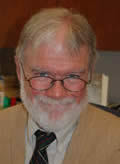
Years ago — on a Notre Dame Magazine assignment, in fact — I spent Holy Week in the Holy Land. As much of that time as possible, I was within the walls of Jerusalem. An anomaly or a coincidence or perhaps even a miracle of the calendar had aligned the celebrations of three feasts sacred to the sacred city’s three faiths, and the streets of the Old City were redolent with the smells of freshly slaughtered flesh, clouds of incense, burning palm branches and smoldering beeswax.
Eid-al-Adha, the feast of Abraham’s readiness to sacrifice his son, drew throngs of Muslims toward the Mosque of Omar; the first day of Passover brought thousands of Jews to the Western Wall just below; and we Christians, of course, were cramming the Church of the Holy Sepulchre.
Standing in the church’s rotunda, at the site of Christ’s tomb, I noticed, as had countless pilgrims preceding me, the truculent jealousy with which Franciscan, Greek Orthodox and Armenian Apostolic priests competed in their custodial duties, each acolyte seeming to “claim” the site for his segment of the Church. They comported themselves less like men at prayer in a holy place than like alpha dogs vying for a shot at a fire hydrant. An uneasy agreement had been reached a century and a half earlier to give their three communities “rights” to the tomb; the Ethiopian and Syriac Orthodox communities have also been granted “rights” to various nooks and crannies in the ancient church.
“It is, of course, all very unseemly and unedifying,” as Evelyn Waugh said of this arrangement when he visited the site in 1951, but he also hearteningly observed that “there is all the difference in the world between a quarrelsome family who still share one home and jostle each other on the stairs and one which has coldly split up into separate households.”
Perhaps. But especially during Holy Week, the truly ironic thing about that unseemly and unedifying arrangement, as about the brawls which occasionally break out among the shrine’s custodians, is that the whole point of revering the place is that it is empty.
This crucial phenomenon of absence seems to have been forgotten. Venerated from the earliest days of the Christian community until now, the site is almost certainly authentic, but if so, it is authentically the place where the first Easter visitors found, not Jesus, but two preemptive strangers who chided them for even showing up there: “Why do you seek the living among the dead?”
There is no greater feast day. This year, as every year, I long to see the flames of the Pascal fires in the evening streets, to add my candle flame to the swelling illumination at the vigil Mass, to hear and sing the first “Alleluia,” to taste the roasted lamb and Rhone wine with which I’ll end the Lenten fast, to ponder what we mean — what I mean — by saying over and over again, “He is risen.”
Nevertheless, I must admit that when it comes to “getting” Easter, I’m no less occluded than those grumpy custodians of the Holy Sepulcher, those bewildered women who first visited there, the hysterical Mary Magdelene, those clueless apostles on the Emmaus road. I have grown fond of my sins and complacent with my comfortable perch in a world that is charming enough, even if it must decay and die.
But if He is risen, He is risen indeed, and He has turned that world inside out. A charming enough world will no longer do. His reveille is so loud it fairly deafens me, and the potency of his joy can evoke something very much like dread. “I order you, O sleeper, to awake,” He says in one of our most ancient sermons. “I did not create you to be a prisoner in hell. Rise from the dead, for I am the life of the dead.”
He has sentenced us to life.
Alleluia.
Michael Garvey is Notre Dame’s assistant director of public relations. Email him at garvey.2@nd.edu.